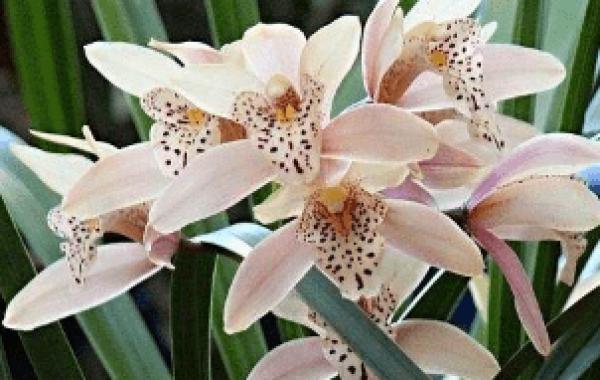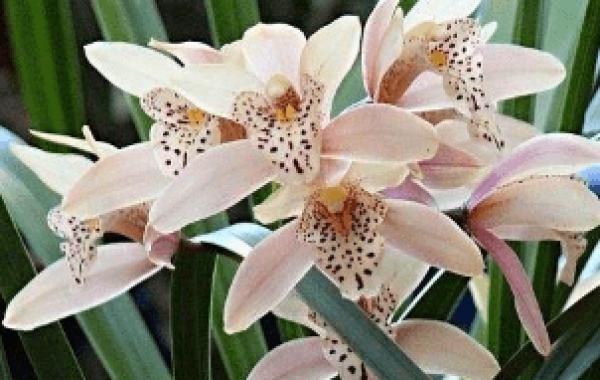How to fertilize orchids? What should be paid attention to when fertilizing?

Orchids have graceful posture, slender leaves, evergreen all the year round, with relatively elegant flowers and a faint fragrance. Raising them at home can make people feel full of vitality. But if you want orchids to grow well and burst into pots, you must give them plenty of fertilizer. Today, let the editor share with you the fertilization methods and precautions of orchids. Let's take a look.
1. Fertilization method
(1) according to the growth of orchids, the leaves should also be examined to see if there are any diseases and insects fertilizing the leaves.
(2) the orchid begins to sprout at the turn of spring and summer, and fertilization on the root of the orchid can promote the rapid growth of new buds.
(3) nitrogen is the main fertilizer used in orchids, and some organic liquid fertilizers can be sprayed. Orchids enter the reproductive growth period in autumn, and it is better to apply phosphorus and potassium fertilizer.
(4) in late autumn and early winter, cross-winter fertilizer should be applied, and solid fertilizer can be applied. Applying liquid fertilizer with higher concentration can not only enhance the cold resistance of the plant, but also lay a good foundation for the growth of the coming year.
(5) the fertilizer used when planting or changing pots is called base fertilizer. The fertilizer used during the growth period, which also includes the fertilizer used during the flowering period, is called topdressing. Fertilizing orchids can be divided into two aspects: base fertilizer and topdressing. Base fertilizer is the use of some solid fertilizer when planting or changing pots, which contains more organic matter, which is conducive to later growth. Topdressing is used in the growing period, mainly liquid fertilizer. The solid fertilizer can be evenly mixed with the soil, and the liquid fertilizer should be diluted.
(6) main points of fertilization in each stage
When ① sprouting plants start to recover, they need to start to replenish their nutrients, but then they begin to recover.
The compound plant can not add fertiliser to the soil, so you can gradually increase the fertilizer, you can top up the thin fertilizer once in the early stage, and then pour water through it. Nitrogen fertilizer or alum fertilizer can be used for watering, the general concentration is about 1RU 200, if you are worried about damage to the plant, you can dilute some more.
② needs a large amount of fertilizer during the growing period, so topdressing is needed. You can continue to apply alum fertilizer, or you can use some special fertilizer for orchids, because this special fertilizer can provide the nutrients needed by the plant, not only nitrogen, phosphorus and other single elements, but also some trace elements or rare nutrients.
The frequency of fertilization in the seedling stage of ③ is lower, and the frequency of adult plants is higher.
④ can add some phosphorus and potassium fertilizer to promote bud differentiation and scape growth before flowering.
During ⑤ dormancy, winter plants may enter dormancy, when the metabolic rate of plants will be greatly slowed down, the temperature will become lower, below 10 ℃ or even stop growing. It is not possible to fertilize dormant plants because it is difficult for the roots to absorb nutrients and too strong soil fertility will burn the roots.
2. Matters needing attention in fertilization
(1) when planting or changing pots, solid fertilizer can be evenly mixed with the soil. The liquid fertilizer used for topdressing needs to be diluted with water, and the ratio of fertilizer to water can be controlled at about 1 per 200.
(2) No fertilizer can be applied to serious diseases and insect pests during the pot period.
(3) in summer, the temperature is higher than 30 ℃, in winter, if the temperature is lower than 10 ℃, the orchid will not grow, so it is necessary to suspend fertilization, otherwise it will cause harm to the plant.
(4) apply thin fertilizer frequently, eat less and eat more, most plants can not feed it at once, orchids are the same for vigorous plants, apply thin liquid fertilizer once every 10-15 days. Thin growth can appropriately shorten the fertilization cycle, but it is still necessary to ensure thin fertilizer.
(5) foliar fertilizer spraying can not only absorb and supplement the nutrition of orchid plants through orchid leaves, but also will not cause fertilizer damage to the roots, which is a better way of fertilization for orchids. As long as in the growth and development period, adhere to a foliar fertilizer spraying for about 10 days, orchids can be raised well, and there is no need to apply fertilizer to the basin.
Related
- Is the orchid suitable for indoor use? Is it good for the body?
- How to prevent the empty root of orchids?
- What to do after the crab claw orchid is withered?
- Why are the leaves of orchids always yellow? Fertilizing and watering.
- Can the root of the gentleman orchid be saved if it is rotten?
- Diagnosis and treatment of cotton-blowing beetle insects in Cymbidium
- There is a way for a gentleman's orchid to rot.
- What is the most suitable temperature and humidity for the orchid?
- How to raise a gentleman's orchid? Cultivation techniques of Cymbidium
- How to prepare the nutritive soil for the cultivation of Cymbidium



